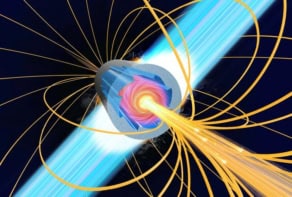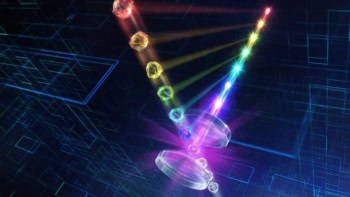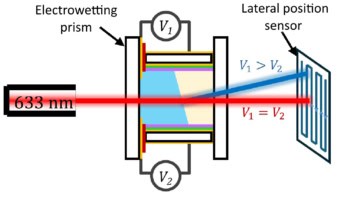
The ability to see round corners would be nice – especially for police offers chasing criminals in a city or for motorists careering down winding country lanes. Although that prospect is still a long way off, researchers in the US have come up with a way of looking round corners using ultrafast laser pulses. Their technique creates a 3D image of what is round a corner by looking at how light reflects from objects in the local environment.
The technique has been developed by Andreas Velten and colleagues at the Massachusetts Institute of Technology, who hid an artist’s mannequin roughly 20 cm tall from the view of a camera by placing it behind an opaque wall that they called the occlude (see image above). A second wall – called a diffuser – was placed at a right angle to the occluder and a small distance away from the end of it. Light travels from the mannequin, scatters from the diffuser and is then captured by the camera – but because the light is scattered diffusely, the image of the mannequin does not appear on the diffuser wall.
In their experiment, Velten’s team positioned an ultrafast laser next to the camera before firing pulses lasting 50 femtoseconds at a beamsplitter. Half of the pulse goes on to a photodetector and the other half continues to the diffuser, from which it scatters and illuminates the mannequin. Some of the light bounces off the mannequin, scatters from the diffuser and finds its way back to the camera.
Arrival times
The distance travelled by the light can be calculated from the time differences between the arrival of the pulse at the photodetector and the light arriving at the camera. The device is, in fact, a specialized instrument called a streak camera, which records the arrival time of light to within 2 ps, which is the time that it takes light to travel about 0.6 mm. The camera also records the intensity of the light as a function of position along one direction.
To build up a 3D image of the mannequin, the position at which the laser pulse first strikes the diffuser is changed in a systematic way and 60 images are acquired, each at a different position. Finally, a computer algorithm is used to reconstruct the image, which can be rendered in 2D or with depth information to provide a 3D image. According to Velten, the algorithms can easily be implemented on a personal computer.
Because the camera only captures light over 2 ps intervals, any background noise from ambient light is small and Velten believes that it should be possible to use the technique even in broad daylight.
Peering into lungs
One possible application of the technology, according to the team, is in endoscopy, in which a tiny camera is inserted into the body. Seeing round corners could be useful in probing organs such as the lungs or heart, which contain corner-like structures. Other applications include locating survivors in an emergency situation and avoiding vehicle collisions at blind corners.
While the current set-up is not portable, Velten tells physicsworld.com that ongoing improvements in semiconductor laser and camera technologies should soon make it possible to create compact systems that could be deployed with firefighters or military personnel.
The system is described in Nature Communications.



